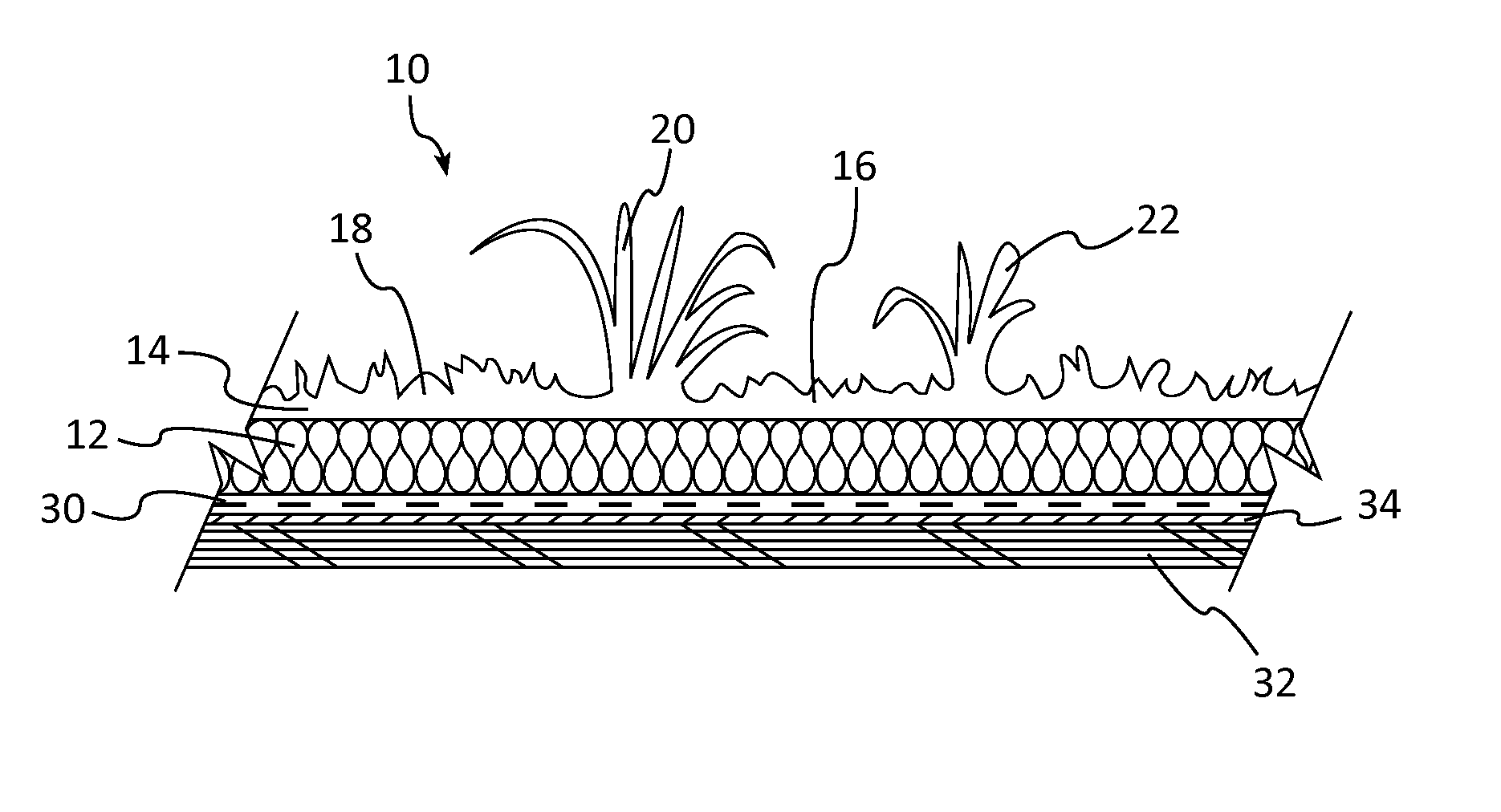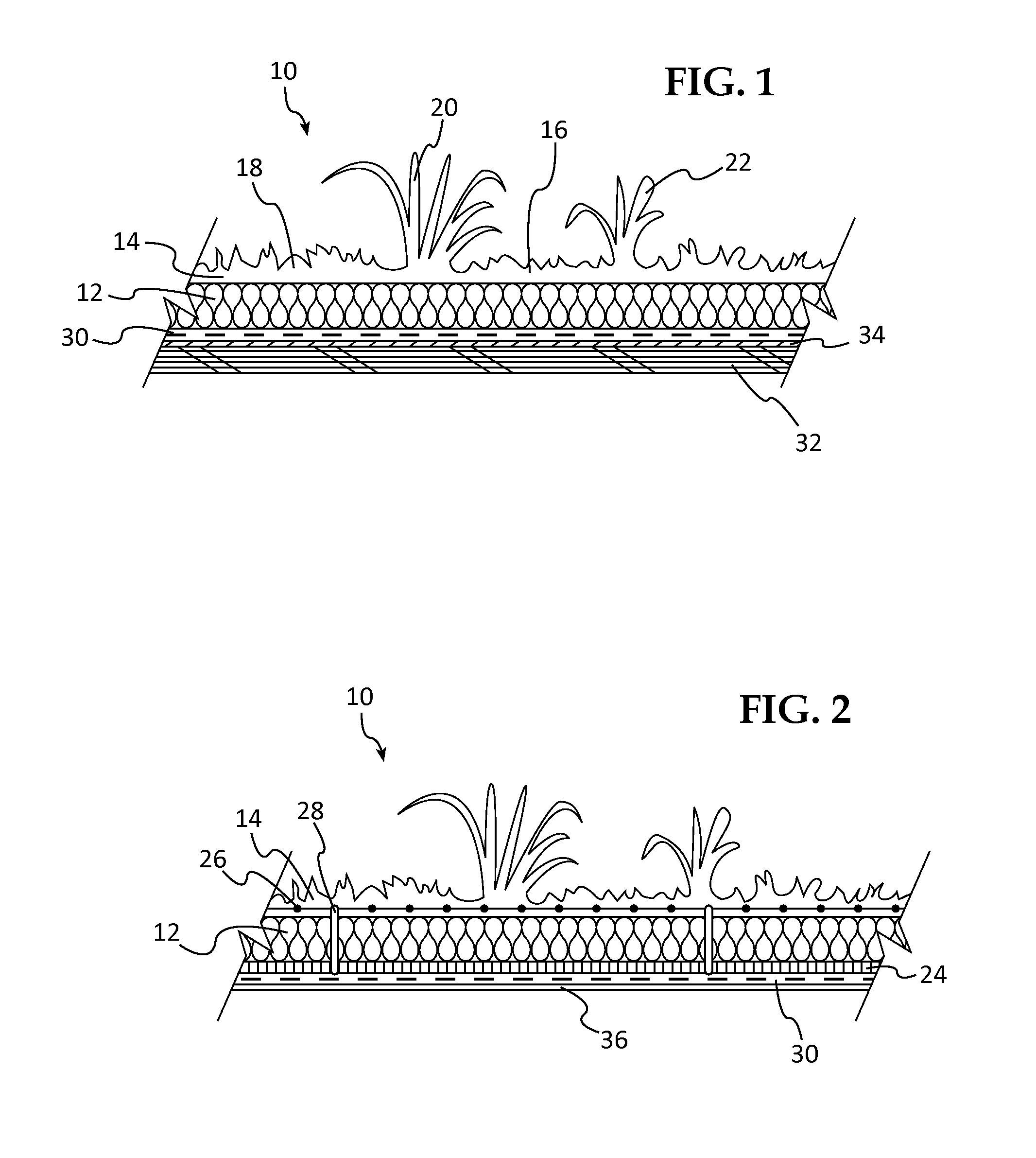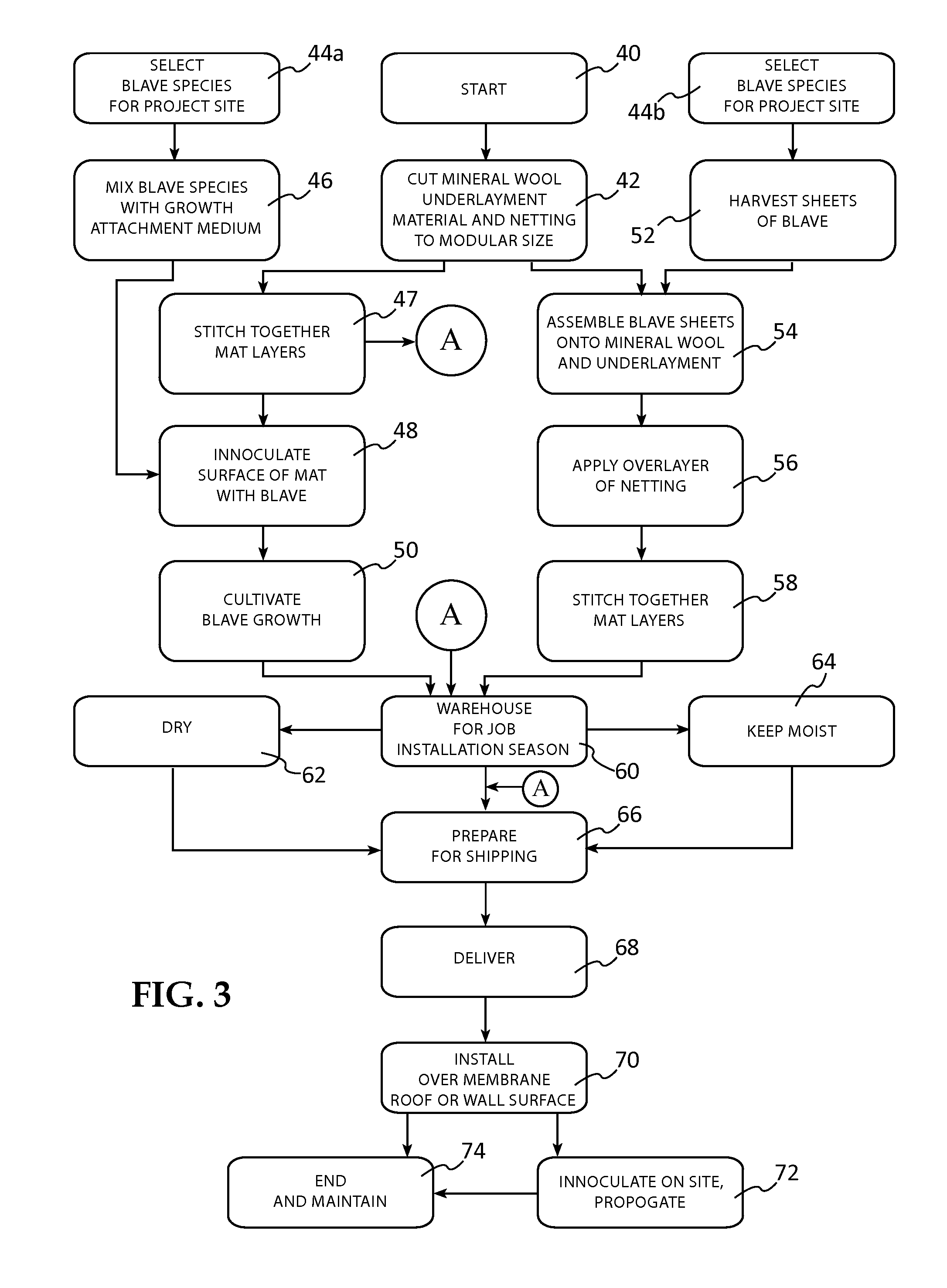Living Roof and Wall Systems Using Cultivated Mineral Wool Mats to Support BLAVEs, Methods of Cultivation and InnoculantsTherefor
a technology of living roof and wall, which is applied in the direction of braid, knitting, turf growing, etc., can solve the problems of inability to safely carry the added load, the current technology of site-built and planted pre-cultivated systems is complex, the installation method is not easy, and the root system is difficult to provide nutrients
- Summary
- Abstract
- Description
- Claims
- Application Information
AI Technical Summary
Benefits of technology
Problems solved by technology
Method used
Image
Examples
example 1
[0052]Following the process steps on the right side of FIG. 3, 575, 2′×4′ modular BLAVE mats of the invention were prepared and installed on the second floor roof of a newly constructed college building, Maier Hall of Peninsula College in Port Angeles, WA. The BLAVE selected was indigenous temperate zone BLAVE species. The flexible mats were stacked 20 or more high for shipping and handling by conventional fork-lift. No special heavy lifting equipment was required to get the mats up to the roof as they are very light, on the order of 25-35 lbs per module. The modular mats are easily installed by hand by minimally trained construction workers. A squiggle of construction adhesive was extruded from standard caulk guns onto the mono-layer roof membrane and the modules lain down thereon and tamped down gently by hand. The flexibility of the mats permitted them to ride up and cover exposed walkway bosses that were present on the roof. The total installation area is on the order of 4600 sq...
PUM
| Property | Measurement | Unit |
|---|---|---|
| Length | aaaaa | aaaaa |
| Length | aaaaa | aaaaa |
| Thickness | aaaaa | aaaaa |
Abstract
Description
Claims
Application Information
 Login to View More
Login to View More - R&D
- Intellectual Property
- Life Sciences
- Materials
- Tech Scout
- Unparalleled Data Quality
- Higher Quality Content
- 60% Fewer Hallucinations
Browse by: Latest US Patents, China's latest patents, Technical Efficacy Thesaurus, Application Domain, Technology Topic, Popular Technical Reports.
© 2025 PatSnap. All rights reserved.Legal|Privacy policy|Modern Slavery Act Transparency Statement|Sitemap|About US| Contact US: help@patsnap.com



